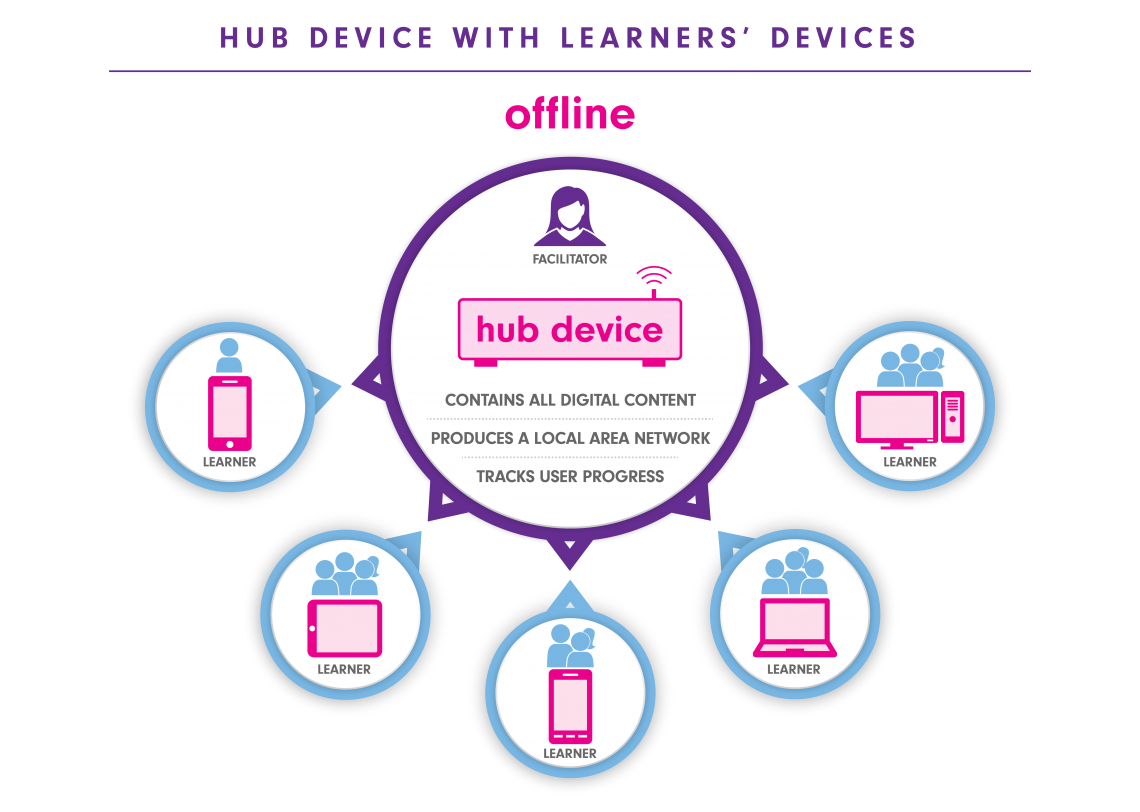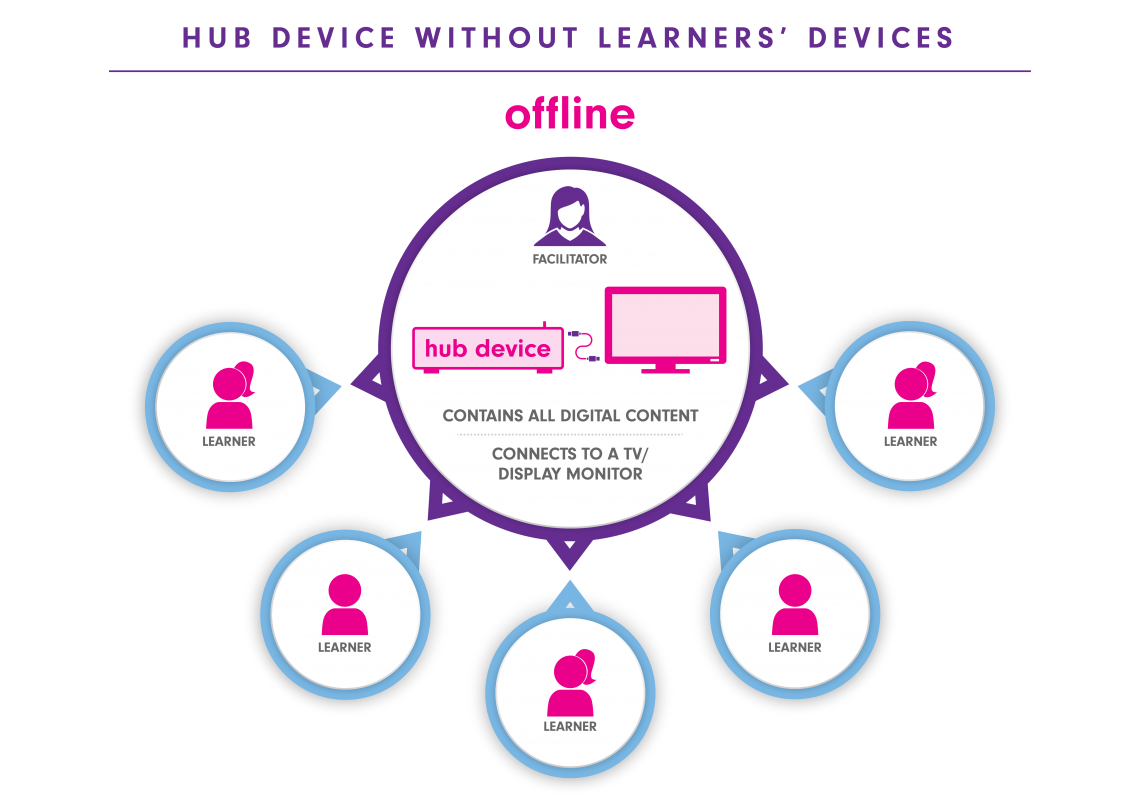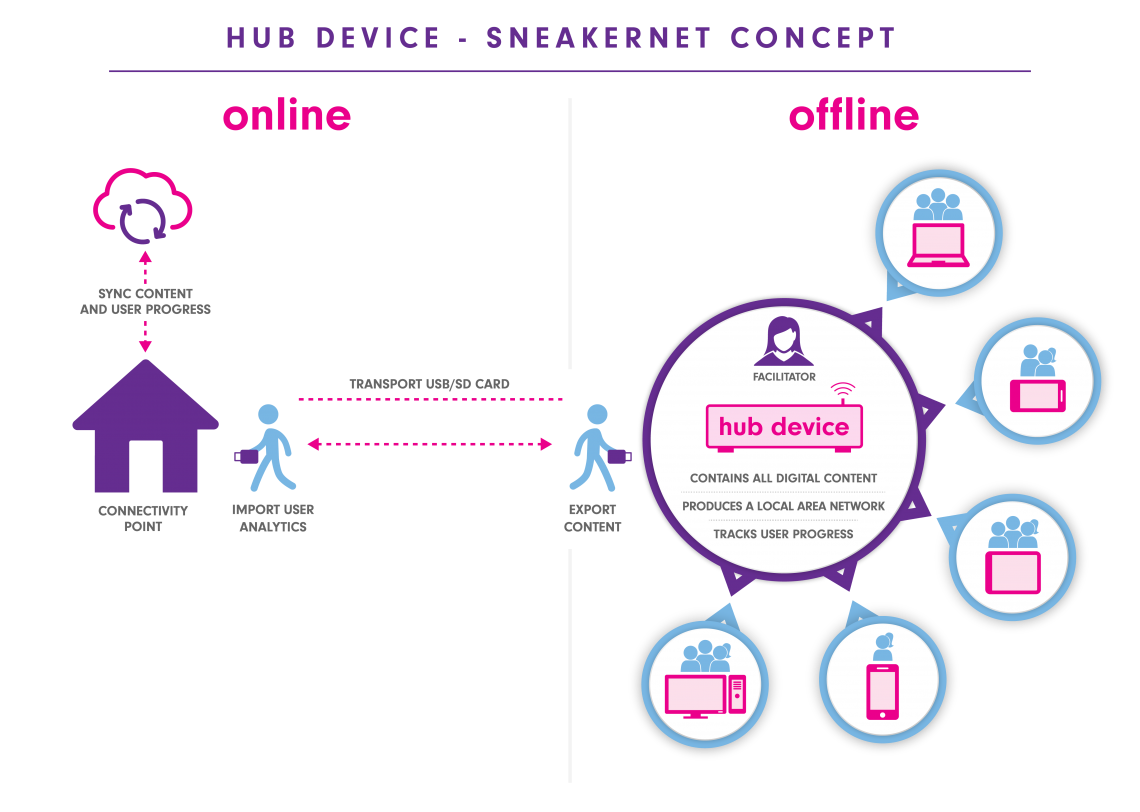Offline Learning
Enabling continuous access to education in low to no connectivity areas
A great digital divide exists today, where two-thirds of the world’s children aged 3-17 years old and 759 million aged 15-24 years old do not have access to the internet in their homes. This lack of connectivity which affects low-income countries and rural regions in greater proportions, put children and youth from these areas at greater risk for missing out on education, perpetuating inequalities.
Main Concepts of Offline Learning
The Learning Passport’s Offline Model enables learners and teachers to continue their education in low to no connectivity areas, helping to bridge the digital learning gap. The offline model utilises two general concepts to provide digital learning experiences in areas without connectivity.
1. Hub/Learner Device Concept
A hub device located in an offline classroom and/or learning centre serves two main purposes.
- It acts as a server, storing all local digital content and individual learner records
- It produces a local area network (LAN), essentially creating a Wi-Fi network
Learners will be able to connect their devices such as phones or tablets to the hub device via a web browser on their device to get access to digital learning content.

Hub devices can also provide standalone digital learning experiences without the use of learner devices. A connector will connect the hub device to a TV or display monitor to project the learning content to a classroom.

2. 'Sneakernet' Concept
For a hub device to gain access to new content and collect learners’ records, the hub device will be intermittently synced. Syncing of digital content, user progress, and analytics to and from the hub device will be completed through the physical transport of data on storage devices such as USB flash drives or SD cards. At connectivity points - places with internet connectivity - data from these portable storage devices will then be synced to an online database.
The Offline Model is built for facilitated learning experiences in classrooms and/or learning centres. Therefore, programme components involve more traditional intervention structures such as teacher training and human scaffolding around a learner.

